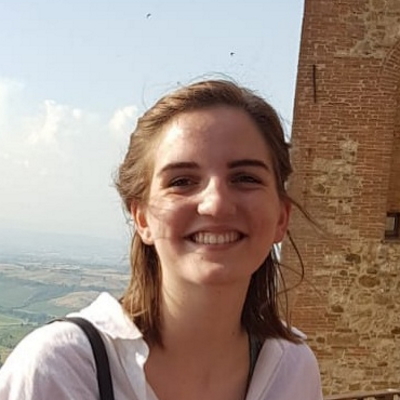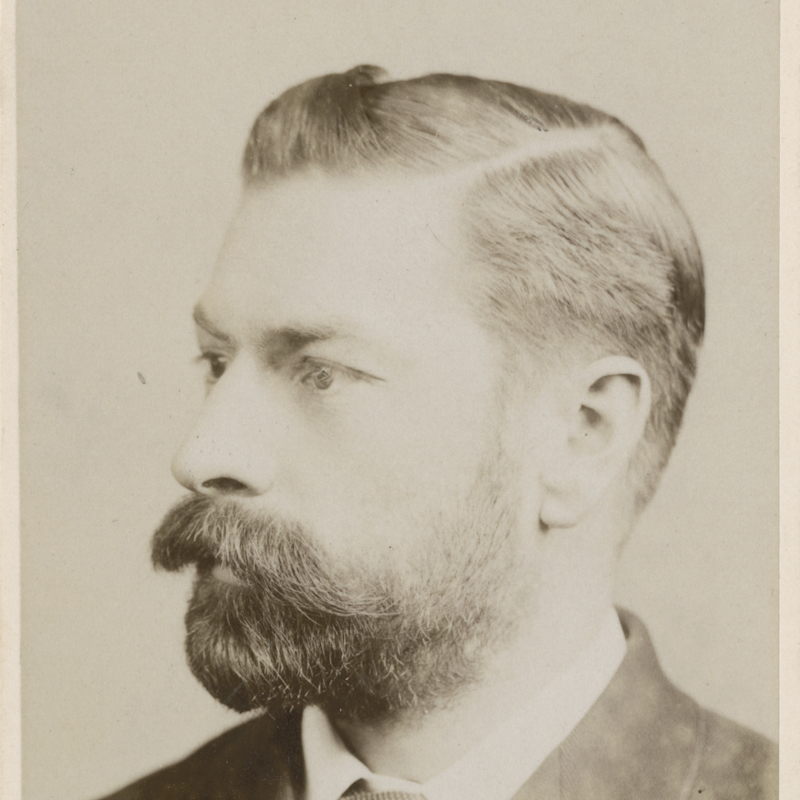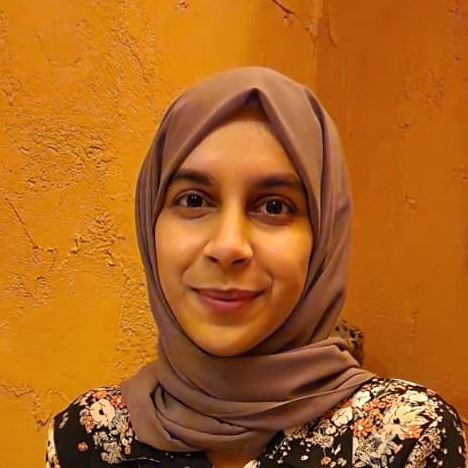Finishing the cataloguing of the Royal Society’s Miscellaneous Correspondence calls for a celebration! Vida Milovanovic reflects on her efforts in the home straight of a huge series.

Nothing scares archivists more than miscellaneous material. Being creatures of order and clarity, we generally dread such random chaos, but the Miscellaneous Correspondence series of letters to the Royal Society was a pleasant surprise and full of intrigue.
As previous cataloguers have noted, the diversity of the series has revealed details of scientific squabbles, rants, and vicious accusations. Upon finishing my portion of the cataloguing, which picked up from the year 1897, I wanted to celebrate by highlighting some of my personal favourites, ranging from wonderful examples of scientific endeavour to sensational disagreements, and interesting requests.
One of the longest running strings of correspondence I came across was in relation to the efforts of Henry Haversham Godwin-Austen FRS to publish his work on the Land and fresh-water Mollusca of India, for which he received monetary grants from the Royal Society donation fund. Costs associated with producing illustrative plates accompanying scientific works were high and often unaffordable for most Fellows. There are many examples in the MC series where Fellows sought funding to assist publication, but this one stuck with me as it reoccurred several times. The work was many years in the making, each letter making me wonder how close Godwin-Austen was to publishing the full work. To see it in its final form on our Library shelves was touching and brought the correspondence to life, not to mention the sense of awe at looking through the beautiful watercolour plates:
 Henry Godwin-Austen (IM/Maull/001688), and the completed Land and fresh-water Mollusca of India on our Library shelves
Henry Godwin-Austen (IM/Maull/001688), and the completed Land and fresh-water Mollusca of India on our Library shelves
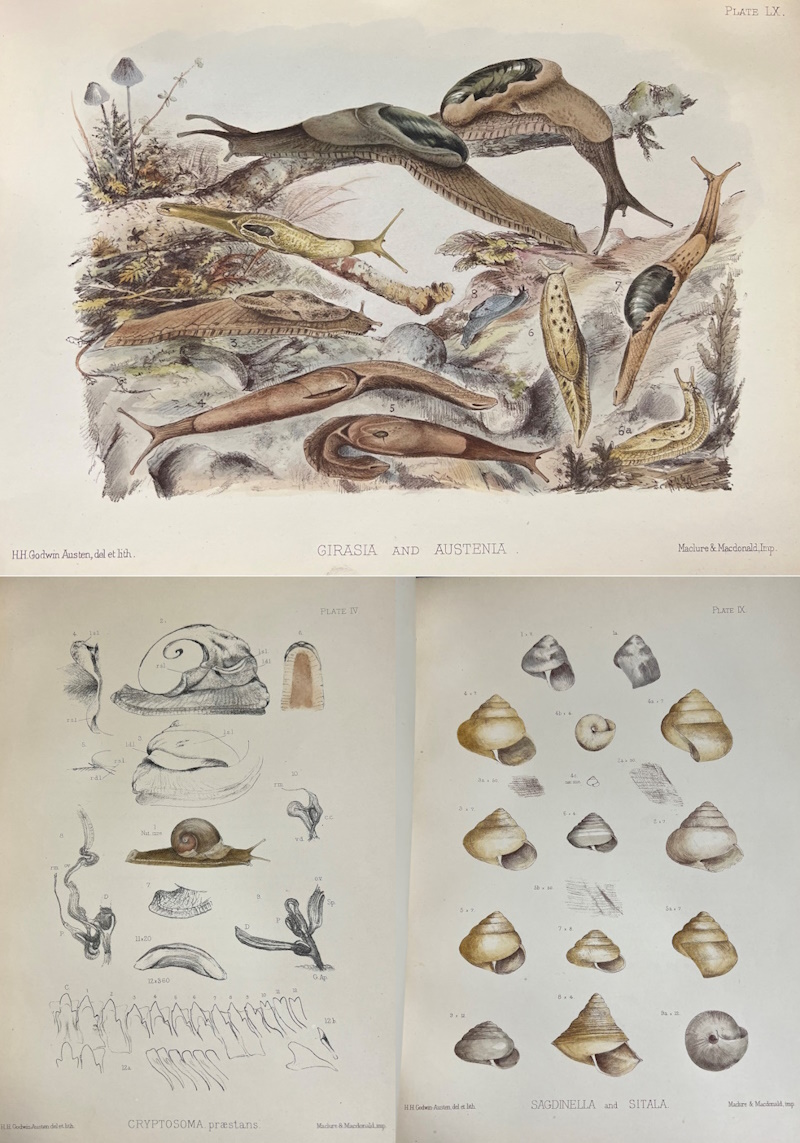 Examples of the beautiful watercolour plates within the publication
Examples of the beautiful watercolour plates within the publication
The enduring popularity of spiritualism led one correspondent to seek definitive answers via scientific investigation. In 1917 Lucy Boyd-Carpenter, having read a recent publication on the subject, urged the Royal Society to deploy some of its younger Fellows to investigate the phenomenon of automatic writing and its claim to be a communication from the spirit world. A small committee to undertake this work would be ‘conferring an inestimable benefit on the human race’, she wrote.
The Royal Society’s reply advised that war work took priority. Boyd-Carpenter maintained that this ‘obscure subject’ was in urgent need of scientific investigation, ‘so that public opinion may have the opportunity of being guided by their conclusions’:
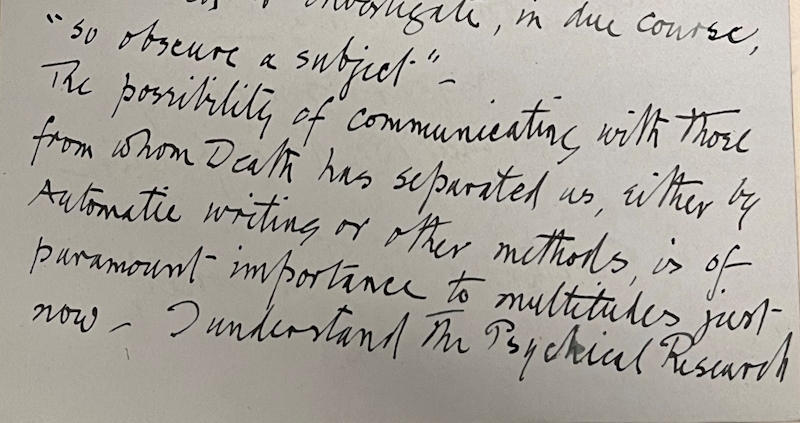
The above excerpt poignantly reminds us of the wider historical context of the letter, written during the First World War, a period in which incomprehensible loss of life became commonplace. Those who survived clung to the hope of speaking to their loved ones again.
This wouldn’t be a true Miscellaneous Correspondence blog if it didn’t feature a scientific squabble. Ross Winthrop Gilbert wrote to the Royal Society in 1923, in the hope of having a new theory of metazoic evolution published, written with his wife, Mabel Crawley Gilbert. William Bate Hardy FRS, the Society’s Secretary, was unimpressed, writing to Ernest William MacBride FRS that he had been ‘through a good deal of this – it seems to be rubbish. Can you discover a fragment worth preserving?’ In response MacBride declared the thesis ‘the most awful tosh I have ever read’ and questioned who communicated it to the Society.
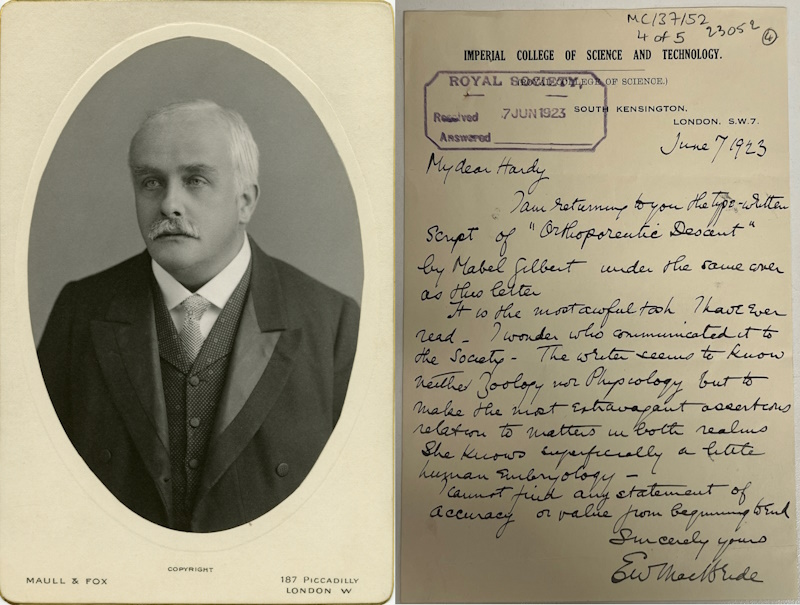 Ernest William MacBride, and his scathing feedback in MC/37/52
Ernest William MacBride, and his scathing feedback in MC/37/52
The work was quietly rejected as unsuitable for publication. After his requests for justification of the decision went unanswered, Ross angrily accused the Society of being dishonourable for offering, in a previous letter, to communicate the thesis, and questioned Hardy’s competence as Secretary. He finally declared that the Society had been churlish and brusque in their communication, adding that ‘the fate of Orthoporeutic Descent, however, will scarcely be decided by your verdict’.
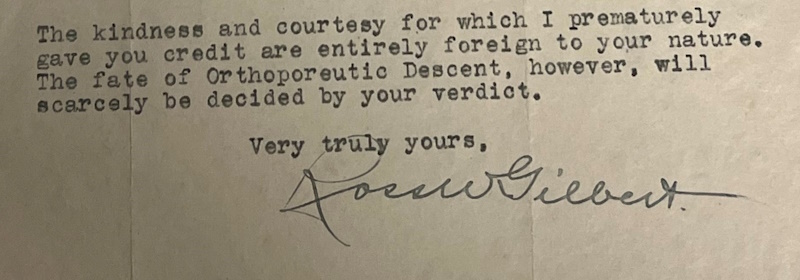 Excerpt from Gilbert’s letter of complaint (MC/37/54)
Excerpt from Gilbert’s letter of complaint (MC/37/54)
There are palaeographic challenges in cataloguing correspondence. Decoding handwriting, even that as recent as the 1900s, can be quite an undertaking, complicated when the letters feature technical scientific terms. I trembled when I first encountered incoming letters from John William Strutt, 3rd Baron Rayleigh FRS – an important scientist known for his work in optics and acoustics, winner of the Nobel Prize in Physics 1904 and President of the Royal Society 1905-1908. His one slight flaw… this illegible scrawl:
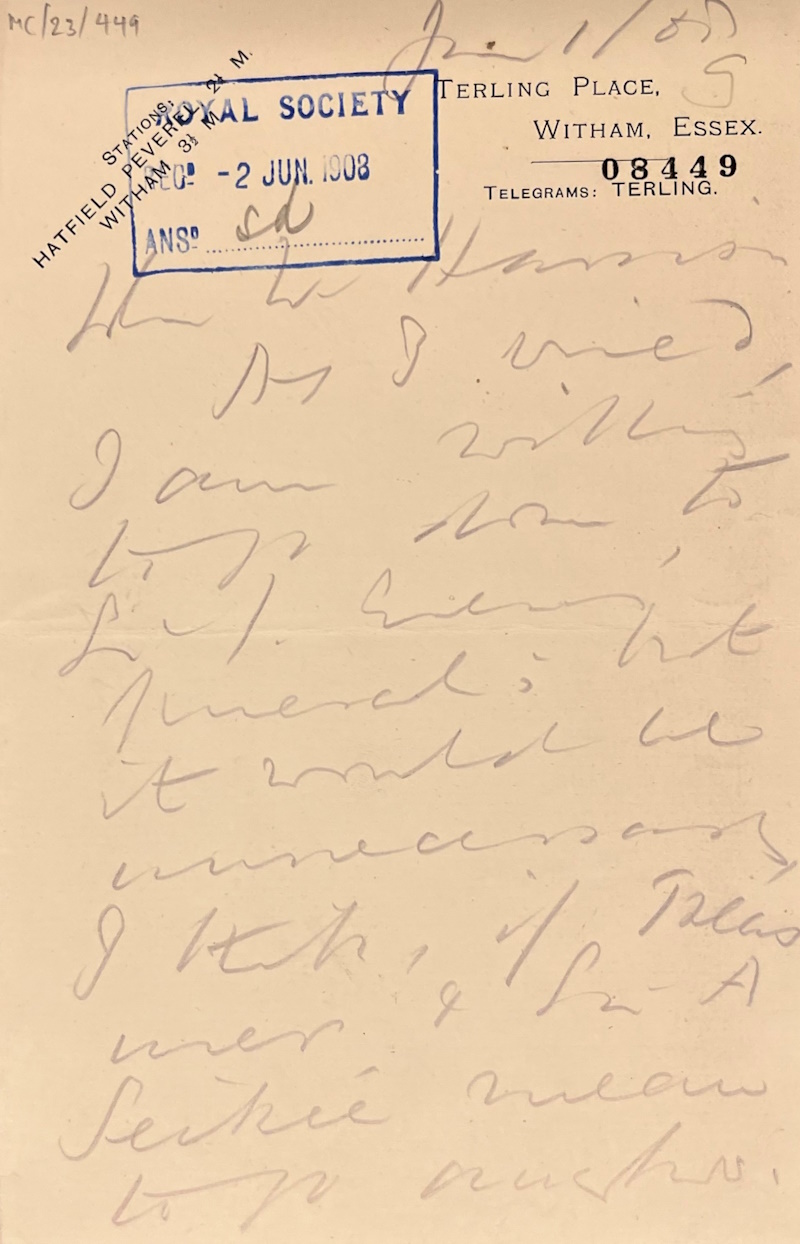 An example of Lord Rayleigh’s hand (MC/23/449)
An example of Lord Rayleigh’s hand (MC/23/449)
Amusingly, this letter now appears quite legible to me, but I remember how I felt when I first saw it. Frequent exposure to a variety of hands and looking for identifiable letter forms helps, but the true fun lies in all the other detective work. Dates, addresses, and sometimes perusing the New Letter Books, containing the Royal Society’s outgoing letters, offered many hints for what the letter could be about. When all the above methods failed, a group chat amongst the archives team would see us struggle and succeed together.
To wrap up, I couldn’t resist featuring two of the most amusingly British excerpts, featuring both tea and rain:
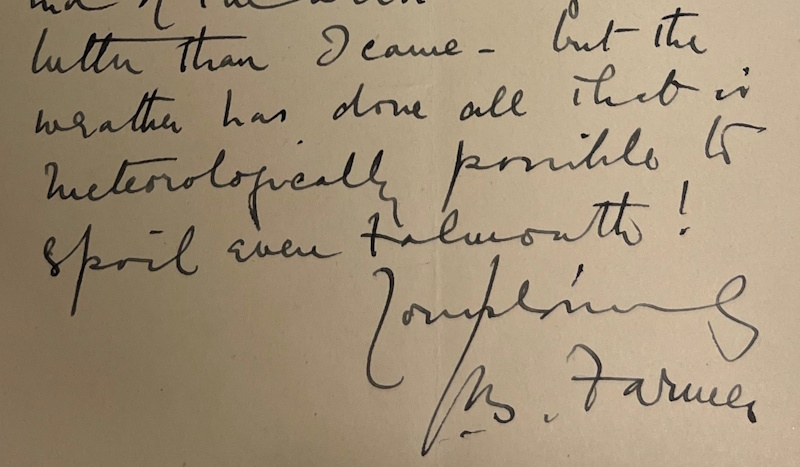 MC/34/66 (dismal weather in Falmouth)
MC/34/66 (dismal weather in Falmouth)
An overwhelming sense of achievement is shared between colleagues who contributed to the completion of the cataloguing, but there’s also a tinge of sadness. Working on the Miscellaneous Correspondence was an educational experience, providing historical context for the pioneering work of some of the Society’s most eminent Fellows, whilst frequently enlivening the daily routine with the unusual and unexpected. These letters offer researchers a glimpse into the way the Royal Society was run and how it engaged with and supported scientific investigation, as well as its relations with scientists from all over the world. I look forward to seeing them used by scholars in our Reading Room.




